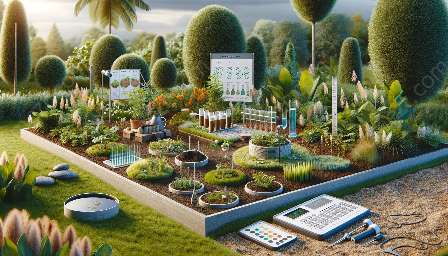The post-harvest phase is critical in the field of horticulture, agriculture, and forestry as it directly impacts the quality, shelf life, and value of harvested produce. By understanding and implementing advanced post-harvest technologies, professionals in these fields can enhance the efficiency and sustainability of their practices, ultimately benefiting both producers and consumers.
Understanding Post-Harvest Technology
Post-harvest technology encompasses a range of processes, methods, and tools designed to extend the shelf life of harvested crops and minimize losses due to spoilage, physical damage, or decay. These technologies play a crucial role in ensuring the availability of high-quality produce throughout the year, enabling better market access and reducing food waste.
Relevance to Horticulture
In horticulture, post-harvest technology is integral to preserving the quality and freshness of fruits, vegetables, flowers, and ornamental plants. Techniques such as controlled atmosphere storage, cold chain management, and modified atmosphere packaging are commonly employed to maintain the nutritional content and prolong the post-harvest life of horticultural products, thereby securing higher market prices and reducing economic losses for producers.
Impact on Agriculture and Forestry
Similarly, post-harvest technology plays a significant role in agriculture and forestry by helping improve the storage, handling, and processing of crops and forest products. Advanced drying methods, such as vacuum and freeze-drying, are utilized to retain the quality of grains, seeds, and nuts, while efficient packaging and transportation techniques safeguard the value of harvested timber and non-timber forest products.
Key Processes and Technologies
Several key processes and technologies are central to post-harvest technology, including sorting, grading, washing, packaging, and preservation methods. For example, the use of ethylene scrubbers and ionizing radiation in fruit and vegetable storage facilities helps control ripening and inhibit mold growth, thereby extending the marketability of these products.
Sustainability and Innovation
Advancements in post-harvest technology also contribute to sustainable agricultural and forestry practices. Through the adoption of energy-efficient cooling systems, bio-based packaging materials, and precision monitoring equipment, professionals can minimize environmental impact and conserve resources while enhancing the overall efficiency of post-harvest operations.
Challenges and Opportunities
Despite the numerous benefits of post-harvest technology, challenges such as infrastructure limitations and lack of access to modern technologies persist, particularly in developing regions. Addressing these challenges presents an opportunity for collaboration between public and private sectors to invest in infrastructure development, knowledge transfer, and skill-building initiatives to empower local producers and communities.
Conclusion
Post-harvest technology stands as a crucial link between production and consumption, holding immense significance for horticulture, agriculture, and forestry. By embracing innovative post-harvest techniques and leveraging sustainable practices, professionals in these fields can optimize the yield, quality, and market value of harvested produce, ultimately contributing to a more resilient and sustainable global food and forestry system.



